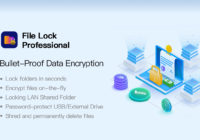How to Create a Private Folder with Gilisoft File Lock Pro (for Windows 11 and 10)
Do you often share your PC with family, friends, or colleagues but worry about sensitive files—like work contracts, personal photos, or financial records—being accidentally deleted, edited, or snooped on? Or maybe you’re working on a confidential project and want to keep it hidden until it’s finished? With Gilisoft File Lock Pro, you can easily create… Read More »

